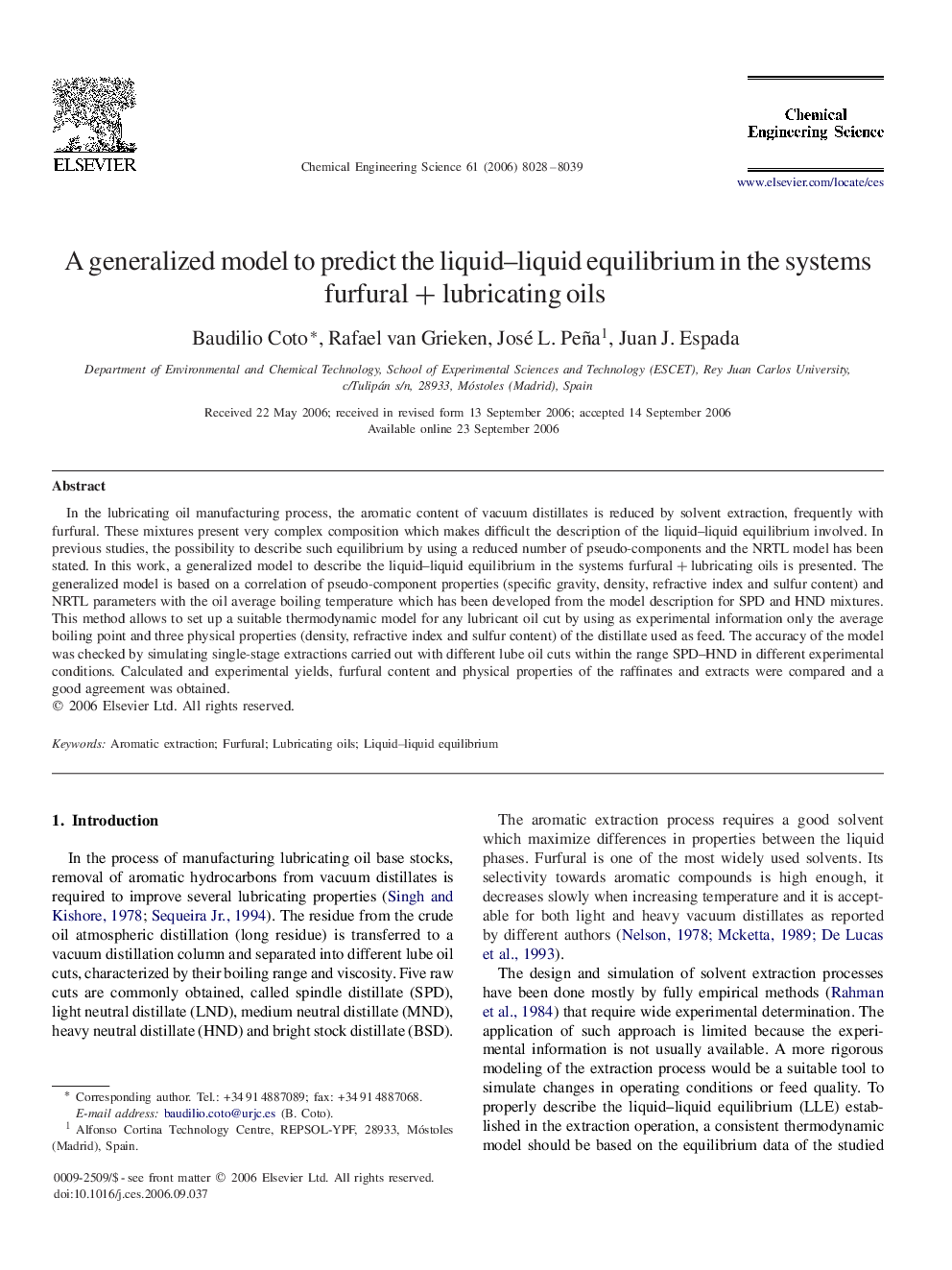| Article ID | Journal | Published Year | Pages | File Type |
|---|---|---|---|---|
| 158561 | Chemical Engineering Science | 2006 | 12 Pages |
Abstract
In the lubricating oil manufacturing process, the aromatic content of vacuum distillates is reduced by solvent extraction, frequently with furfural. These mixtures present very complex composition which makes difficult the description of the liquid-liquid equilibrium involved. In previous studies, the possibility to describe such equilibrium by using a reduced number of pseudo-components and the NRTL model has been stated. In this work, a generalized model to describe the liquid-liquid equilibrium in the systems furfural+lubricating oils is presented. The generalized model is based on a correlation of pseudo-component properties (specific gravity, density, refractive index and sulfur content) and NRTL parameters with the oil average boiling temperature which has been developed from the model description for SPD and HND mixtures. This method allows to set up a suitable thermodynamic model for any lubricant oil cut by using as experimental information only the average boiling point and three physical properties (density, refractive index and sulfur content) of the distillate used as feed. The accuracy of the model was checked by simulating single-stage extractions carried out with different lube oil cuts within the range SPD-HND in different experimental conditions. Calculated and experimental yields, furfural content and physical properties of the raffinates and extracts were compared and a good agreement was obtained.
Related Topics
Physical Sciences and Engineering
Chemical Engineering
Chemical Engineering (General)
Authors
Baudilio Coto, Rafael van Grieken, José L. Peña, Juan J. Espada,
